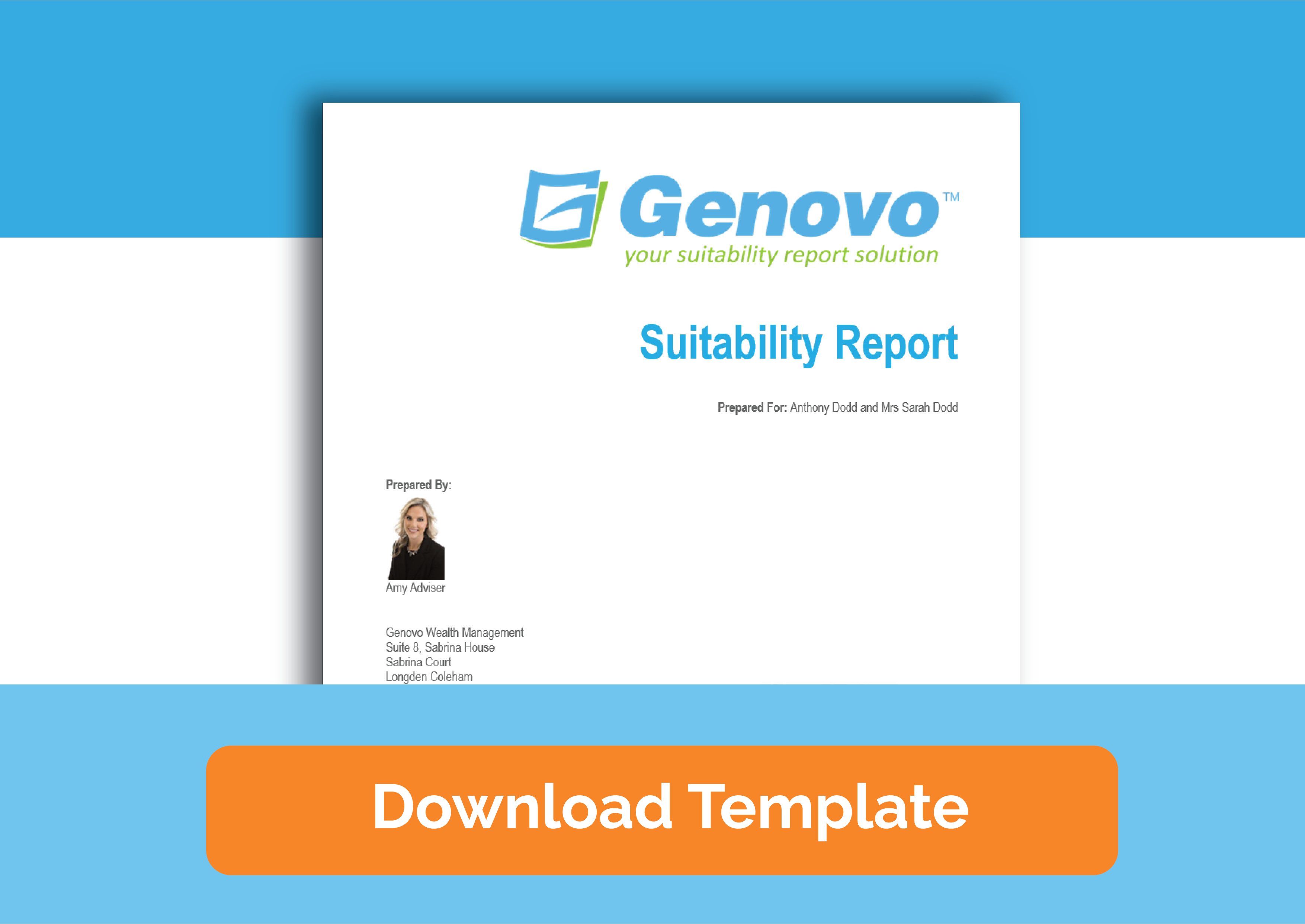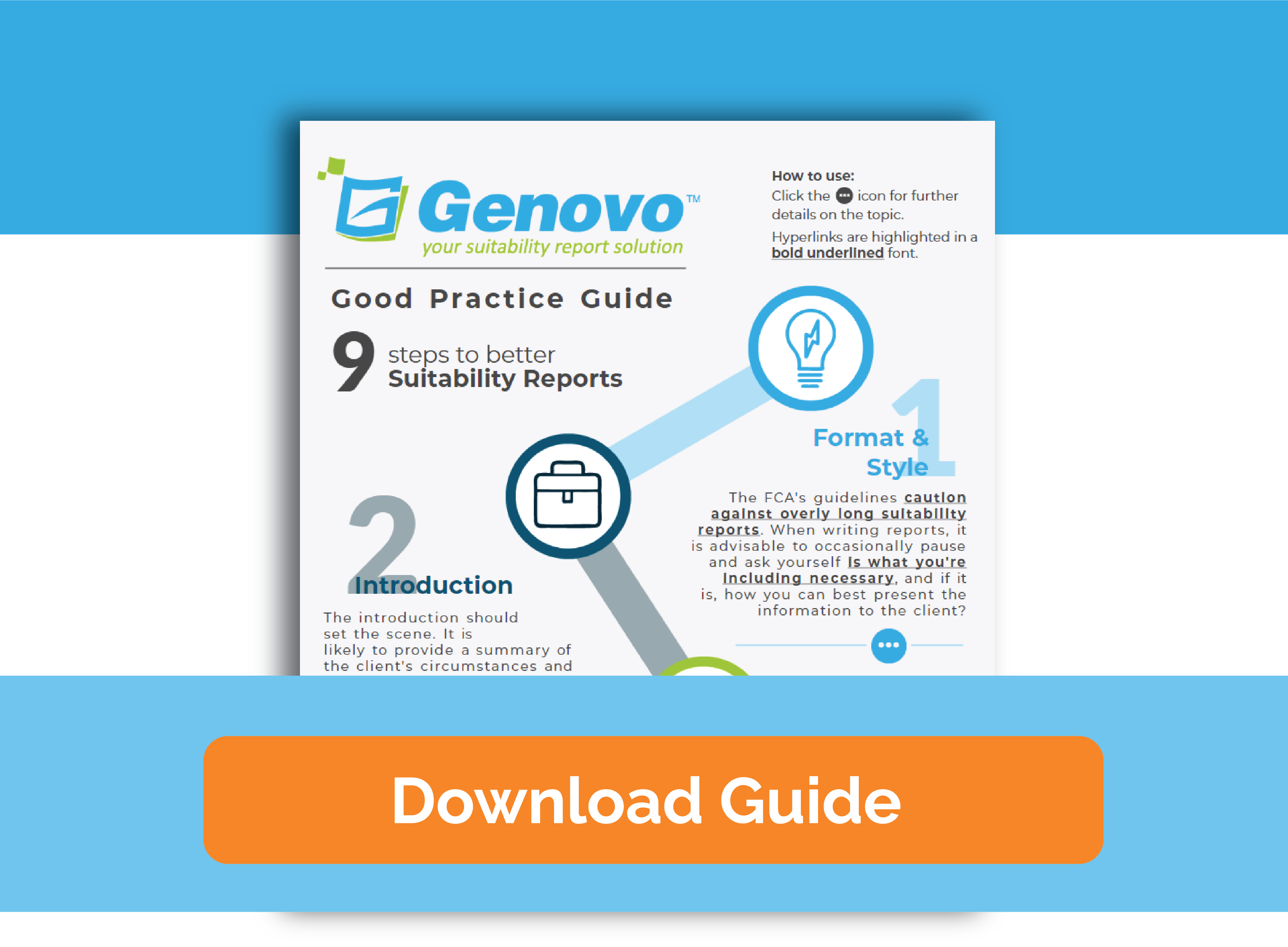
How does Genovo help you fulfil the FCA’s expectations when recommending replacement business – Part 2
Richard Lent
 |
IMPORTANT – This user tip relates to an older version of Genovo. Although much of the content and many of the concepts still apply to the current version of Genovo, the screenshots and some instructions may no longer be accurate. |
Welcome to the second in a series of blogs on replacement business. Last time I looked at how Genovo helped you replay your clients objectives in a clear and personalised way.
In this blog I wanted to cover how Genovo helps you highlight any benefits and features of a client’s existing plan that may be lost on transfer / encashment; and also point out any disadvantages associated with the advice being given – whether this be lost benefits, increased charges, or tax charges etc.
It’s worth clarifying again that in Genovo’s humble opinion replacement business includes any product, plan or provider switch or transfer. We do not consider a fund switch to be replacement business. So let’s take a look at how Genovo helps.
Benefits & features
Genovo can’t help you gather the information you require to carry out your review, but it can help you spot any gaps in the information you have already gathered.
As I mentioned in my previous blog, to ensure you cover off all of the replacement business requirements you will need to use our Suitability Report.
So let’s take a look at pensions cases. After adding the client’s existing plan(s) to the Plan Summary step of the Review of Your Existing Pension Plans section and clicking the forward arrow, you will be taken to the Money Purchase Pension Benefits & Features step, where you’ll be prompted to highlight any particular benefits and features of the existing plan that could be lost when it is replaced.

You’ll notice that only money purchase pensions added to the plan summary step will appear in this step. By clicking on the edit pencil next to each plan you’ll be taken to a new page where you can add detail about the benefits and features of the plans being reviewed.

Remember, there are very few mandatory fields within Genovo and sometimes a field just isn’t relevant. If so, just leave it blank and it won’t come out in your report when you download it to Word. For example, if the pension plan doesn’t invest in a With Profit fund then clearly neither the Terminal Bonus nor the Market Value Adjustment fields are going to be relevant so leave them blank.
There may also be times where you need to provide a bit more information about a particular benefit or feature. For example, the pension may have a Guaranteed Annuity Rate (GAR) and hence I’ve selected ‘Included’ for the Guaranteed Retirement Income field, but I’ve also added some further detail regarding how the guaranteed annuity rate works in practice in the text box at the bottom of the page. You will also find a similar step in the recommendation section where you can highlight any benefits and features associated with the new pension plan you’re recommending.

Key disadvantages & tax implications
Highlighting any possible disadvantages associated with your advice is one of 4 key aspects that must be covered off within a suitability report as stated in COBS 9.4.7. And this is never going to be any more important than when you’re recommending replacement business.
At this point it is important to note that in our humble opinion a disadvantage is different to a risk warning.
For us, a disadvantage is a matter of fact. For example:
‘You will incur a charge of £1000 on the transfer of your pension.’
Whereas a risk warning is a potential negative outcome. For example:
‘There is no guarantee that the new plan will perform better than your existing plan.’
To help speed up the report building process in Genovo, all relevant risk warnings specific to the advice you are giving, will be automatically inserted into your report.
However, you will need to highlight any client-specific disadvantages and tax implications associated with your recommendations, and it’s in the Key Disadvantages & Tax Implications step that you should do this.
And because it is so important to make the client aware of any disadvantages and tax implications associated with the recommendations being made, you’ll find a Key Disadvantages and Tax Implications step in all review AND all recommendation sections in Genovo. The thinking behind this is that it allows you to highlight any disadvantages associated with the recommendation you are making in respect to the client’s existing plan in the review section, and any disadvantages associated with the new plan being recommended in the recommendation section.
The Key Disadvantages step comes preloaded with a number of standard advice reasons that cover some of the more commonplace negative outcomes that could come about as a result of the advice being provided in that section.

However, as with any standard advice options or advice reasons within Genovo, on selection, each one can be edited to suit the client’s specific circumstances by clicking on the pencil icon to the right, and we would actively encourage you to do so.
And if none of the standard options fit the bill, you can also easily add your own by simply clicking add advice reason. When adding your own advice reason, you again have the option to add it to this report, add it to the library, or save it to the library and share it with your other users.
In terms of the report, any options you select in the Key Disadvantages and Tax Implications step will be included in a shaded box to make them stand out and ensure the client doesn’t miss them.

Further Reading
I hope you’ve found this blog useful. In 2 week’s time I will finish this series of blogs by taking a look at how Genovo helps you provide your clients with a comparison of both the charges and the investment performance of the existing and recommended plans. In the meantime, there’s lots of information out there on this subject, but some of the documents and articles that you might find particularly useful are listed below.
FCA (or FSA as it was at the time) guide to assessing suitability for replacement business
Make sure you don’t miss any of our hints & tips – subscribe and get email alerts when we update our blog.

